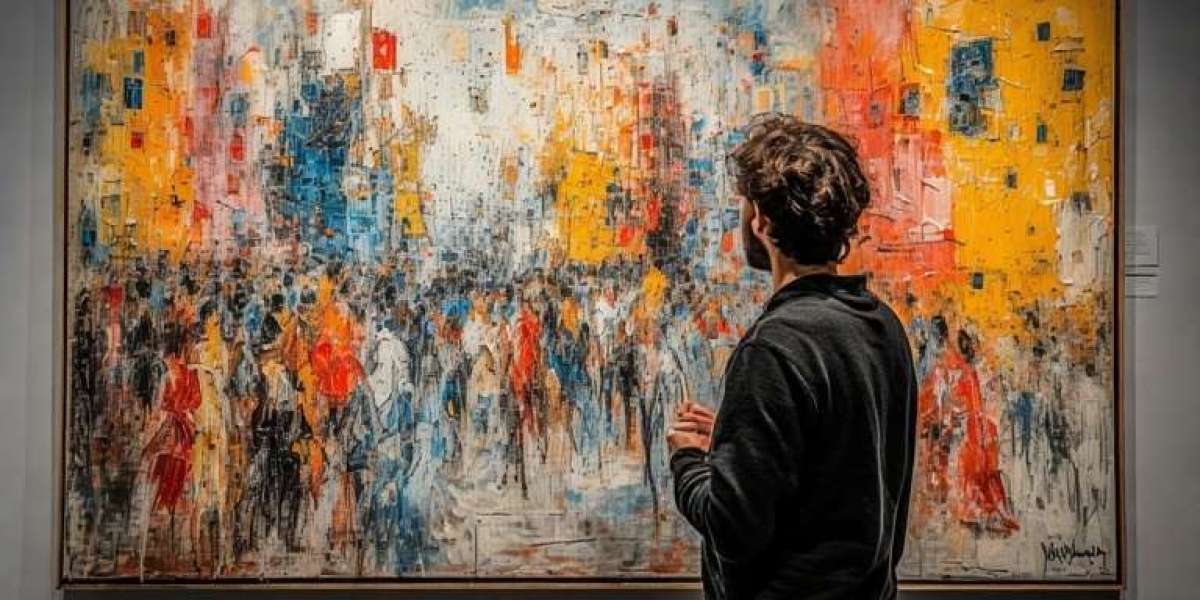Introduction
In today’s fast-evolving art world, where digital tools and conceptual installations dominate headlines, there is a growing appreciation for artists who reconnect with raw, emotional expression. Among the most compelling are contemporary Expressionist painters—creators who draw from a century-old tradition and reimagine it for today’s complex, visually saturated world.
Rooted in the Expressionist movement of the early 20th century, contemporary Expressionist painters emphasize personal emotion, dynamic color, and abstract forms that reflect not only their inner world but also society’s shifting narratives. These artists continue to challenge conventional aesthetics, offering intense, visceral works that captivate both the eye and the heart.
What Defines a Contemporary Expressionist Painter?
A Legacy of Emotion-Driven Art
Expressionism began in early 1900s Germany as a bold rebellion against realism. Artists like Edvard Munch and Ernst Ludwig Kirchner sought to communicate psychological states through distortion, vivid color, and energetic brushwork. Contemporary Expressionist painters inherit this mission, channeling emotion over realism, but with new themes, media, and global perspectives.
Today’s Expressionists often blend traditional painting techniques with digital media, installation, and even performance. While styles may vary, their common thread is the prioritization of emotional truth over technical perfection.
Key Characteristics
A contemporary Expressionist painting might feature:
Bold, unfiltered use of color
Visible brushwork and textural layering
Abstract or semi-abstract figures
Themes of inner turmoil, societal critique, or human connection
Spontaneity, improvisation, and intensity
The aim is not to depict what is seen, but what is felt—and that makes this genre particularly resonant in an emotionally complex era.
The Role of Expressionism in Today’s Art Landscape
Timeless Relevance
In a culture where visual overload is the norm, contemporary Expressionist painters offer something increasingly rare: emotional honesty. These artists create works that speak to existential anxiety, cultural unrest, identity, and personal transformation. Their pieces are not made for passive viewing—they demand introspection.
Collectors and curators alike recognize this. Expressionist works have retained strong value in galleries and auctions, especially when they show technical skill alongside compelling emotional narratives.
Spotlight on Modern Voices
The field is rich with innovative voices who bring their personal histories and stylistic innovations to the canvas. Among them is Sébastien Montel, a contemporary painter whose emotionally charged works blend symbolic abstraction with dynamic energy. His pieces offer a nuanced exploration of identity, humanity, and emotion—hallmarks of modern Expressionist mastery.
Why Expressionism Still Resonates
Art as Emotional Catharsis
Contemporary life is filled with complexity—digitally driven, politically polarized, and mentally demanding. Expressionist painters offer viewers a chance to pause and reflect. Their art often serves as emotional catharsis, both for creator and audience, fostering a deeper human connection through the act of visual storytelling.
Expressionism as Social Commentary
Many contemporary Expressionist painters use their art as a platform for commentary. Whether addressing mental health, racial justice, or ecological crisis, the genre’s emotional rawness allows for powerful, thought-provoking engagement. The ambiguity in abstract or gestural painting invites viewers to interpret and internalize messages at a personal level, making it more impactful.
How to Recognize and Collect Contemporary Expressionist Art
Assessing Authenticity
When exploring or collecting Expressionist works, look for authenticity—not just in materials but in emotion. Ask:
Does the painting evoke a strong reaction?
Is there a clear, personal or societal narrative?
Is the technique consistent with expressive intent?
Supporting Living Artists
One of the most rewarding aspects of contemporary art is the opportunity to support working artists. Buying directly from the artist or through reputable platforms fosters sustainability in the art ecosystem. Artists like Sébastien Montel, who continually evolve their visual language, are perfect examples of how this support can fuel innovative and meaningful work.
The Future of the Expressionist Painter
Integration of New Media
While brush and canvas remain central tools, many Expressionist painters are now incorporating digital elements, mixed media, or video to expand their narrative potential. This evolution doesn’t replace traditional Expressionism—it enhances it, making the genre more adaptable and inclusive.
Continued Emotional Relevance
As long as humans seek connection, healing, and truth, Expressionist painting will remain relevant. Its emotional immediacy is universal, transcending language and cultural barriers. The genre’s flexibility also allows it to respond in real time to current events, making it one of the most alive forms of visual art today.
Conclusion
Contemporary Expressionist painters continue to defy expectations, embracing emotion as both subject and medium. They remind us that in an age dominated by speed and surface, depth still matters. Their canvases speak not only of individual experience but also of the collective human journey—filled with joy, fear, chaos, and beauty.
Whether you are an art enthusiast, collector, or simply a curious observer, exploring the world of today’s Expressionist painters offers a chance to engage with some of the most powerful and human works being created. Artists like Sébastien Montel exemplify this spirit, offering thought-provoking work that both challenges and connects.
Expressionism isn’t just a historical movement—it’s an ongoing, evolving conversation. And contemporary painters are writing the next chapter with every stroke.







